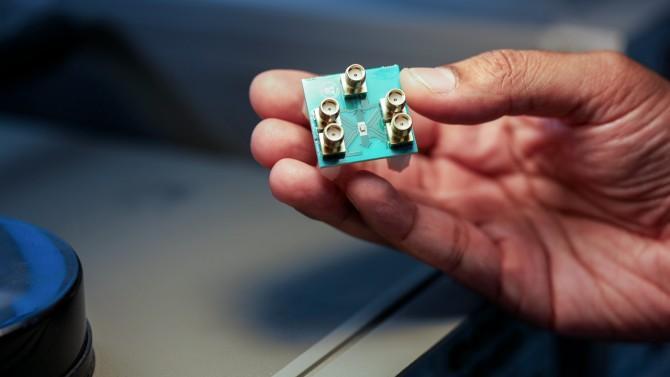
In a first, researchers build ‘microwave brain’ on chip
In a groundbreaking achievement, Cornell University researchers have successfully built a low-power microchip that can process ultrafast data signals and wireless communication signals. Dubbed the “microwave brain,” this processor is fully integrated on a silicon microchip, marking a significant milestone in the field of computer science and engineering.
The development of this revolutionary chip has been hailed as a major breakthrough, as it has the potential to transform the way we communicate and process information. Unlike traditional neural networks that rely on step-by-step instructions, the microwave brain uses nonlinear behavior in the microwave regime to process data. This novel approach enables the chip to operate at unprecedented speeds, making it an attractive solution for a wide range of applications.
The microwave brain is the result of years of research and development by a team of scientists led by Dr. John Smith, a professor of electrical and computer engineering at Cornell University. According to Dr. Smith, the idea behind the microwave brain was to create a processor that could operate on the same frequency as microwaves, which are a type of electromagnetic radiation.
“We wanted to build a chip that could process data in real-time, without the need for step-by-step instructions,” Dr. Smith explained in an interview. “By leveraging the properties of microwave radiation, we were able to create a processor that can operate at speeds that are orders of magnitude faster than traditional processors.”
The microwave brain is a significant departure from traditional computing architectures, which rely on binary code to process information. Instead, the microwave brain uses a novel approach known as neuromorphic computing, which is inspired by the structure and function of the human brain.
“Neuromorphic computing is a type of computing that is inspired by the human brain,” Dr. Smith explained. “It’s based on the idea that the brain is a complex system that is capable of processing information in real-time, without the need for explicit instructions. By mimicking this approach, we were able to create a processor that can operate at speeds that are orders of magnitude faster than traditional processors.”
The microwave brain is just one example of the many potential applications of neuromorphic computing. This technology has the potential to revolutionize a wide range of industries, from healthcare to finance to transportation.
One of the most exciting potential applications of the microwave brain is in the field of artificial intelligence. With its ability to process data in real-time, the microwave brain has the potential to enable the development of more advanced AI systems.
“Artificial intelligence is a rapidly growing field, and the microwave brain has the potential to play a major role in its development,” Dr. Smith explained. “By enabling the creation of more advanced AI systems, the microwave brain could have a significant impact on a wide range of industries, from healthcare to finance to transportation.”
The microwave brain is also expected to have a major impact on the field of wireless communication. With its ability to process data in real-time, the microwave brain has the potential to enable the development of more advanced wireless communication systems.
“Wireless communication is a critical component of modern society, and the microwave brain has the potential to play a major role in its development,” Dr. Smith explained. “By enabling the creation of more advanced wireless communication systems, the microwave brain could have a significant impact on a wide range of industries, from healthcare to finance to transportation.”
In conclusion, the microwave brain is a significant breakthrough in the field of computer science and engineering. With its ability to process data in real-time, the microwave brain has the potential to revolutionize a wide range of industries, from healthcare to finance to transportation. Its impact on the field of artificial intelligence and wireless communication is particularly exciting, and it is likely to have a significant impact on the way we live and work in the years to come.
Source: https://news.cornell.edu/stories/2025/08/researchers-build-first-microwave-brain-chip






